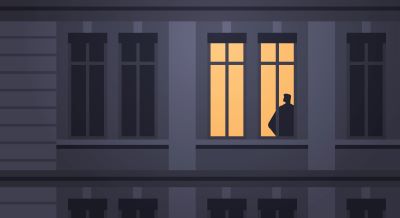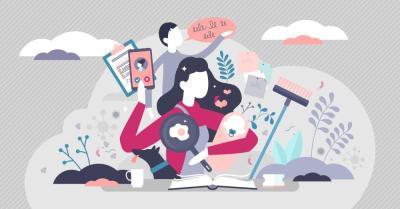Steps to Combat Seasonal Affective Disorder (SAD) and the Holiday Blues
Steps to Combat Seasonal Affective Disorder (SAD) and the Holiday Blues

The winter months can be a beautiful time, but as the season continues to shift, it is common for a lot of people to also experience a shift in mood.
Seasonal affective disorder (SAD) is a type of depression that is brought on by the changing of seasons. Seasonal depression is often associated with “the holiday (or winter) blues” but this is not entirely accurate, as these seasonal shifts in our moods can occur in spring and summer, as well.
In the wintertime though, shorter days, fewer hours of sunlight, worse weather, or unmet expectations around family reunions or connections with friends can all contribute to SAD. The holidays can also exasperate feelings of loneliness, as we have time off work away from any social contact there, or if friends are away visiting others.
Common symptoms of SAD (and depression) include low energy, lack of interest in life, lack of sleep, changes in appetite, feeling down, difficulty concentrating, and suicidal thoughts.
Besides a seasonal shift in mood, it can sometimes be hard to differentiate SAD from other types of depression, but there are some symptoms more common in SAD (and when clustered together, they help doctors differentiate SAD from other types of depression).1 In the winter this can look like craving high-carb foods, oversleeping, and weight gain.
When it comes to seasonal struggles, the best offense is a good defense. If you are prone to SAD, it is a good idea to take proactive steps leading up to the seasons when you typically notice symptoms. Consider participating in mood-boosting activities to prepare yourself for the upcoming season. Establishing good habits before the weather takes a turn makes it easier to maintain them during those slumps.
It’s important to consult a doctor as they can offer insight and recommendations regarding your symptoms and additional steps you can take to improve your mental health.
Here are some tips to get you started:
Create a Schedule
Maintaining a regular eating and sleeping schedule has many depression-fighting benefits. Scheduling sleep improves our sleep quality and makes it possible to maximize time spent outside in the sunlight - both of which have been found to lessen the symptoms of depression.
Setting aside dedicated times for meals can also help to counter any depression-related changes in appetite or weight (so we can avoid extra snacking throughout the holidays).
Stay Active
Physical activity can help fight symptoms of SAD, while also combatting weight gain, a common symptom of depression. Physical activity promotes the release of endorphins, which are mood boosting chemicals in the brain.
Outdoor exercise is the most beneficial, as it can also give us the chance to get some fresh air and sunlight. However, it’s good to have backup plans as it is more likely to be snowing or raining in the winter, making many outdoor exercises more difficult. In this case, using a treadmill, stationary bike, or elliptical machine is a great way to stay active despite the weather. We can move our home exercise equipment near an open window or take a window spot at the gym to increase our exposure to mood-boosting sunlight and fresh air.
Manage Your Vitamin D Intake:
Vitamin D deficiency is a known risk factor for depressive disorders, including SAD. Vitamin D is produced when the body is exposed to sunlight, so people are at an increased risk for vitamin D deficiency during the fall and winter months, especially if they live in a northern climate.
Although understudied, racial groups with darker skin have higher rates of vitamin D deficiency. [2] This, on top of other socioeconomic factors, may make certain groups more vulnerable to SAD.
The National Centre for Complementary and Integrative Research suggests incorporating vitamin D naturally through exposure to sunlight and a vitamin rich diet. This may be more difficult during the winter months, but it’s not impossible. Here are some tips to maximize our vitamin D production:
Get Outside
-
Take advantage of daylight whenever possible. Even a quick stroll around the block can help. Scheduling a daily walk around noon, when the sun is high, will help us produce vitamin D, even on a cloudy day. If you are unable to go outdoors, keep blinds and curtains open to allow natural light in.
Consider Light Therapy
-
This approach uses exposure to artificial light, designed to mimic sunlight, to help keep our circadian rhythms (our sleep-wake cycles) on track. Phototherapy boxes are much brighter than traditional bulbs and give off light that mimics sunshine.
Lights with 10,000 lux that emit as little UV light as possible are recommended. [3] Spending 20 – 30 minutes per day in front of these boxes can elevate moods and help to alleviate symptoms of SAD.
Vitamin D Supplements
If you live in a climate where there is not sufficient sunlight during the winter months, you can also try taking a vitamin D supplement, although it is currently unclear whether these supplements improve the symptoms of SAD, they can help avoid vitamin D deficiency.
Avoid Depressants (Alcohol)
During holiday celebrations, it’s easy to get caught up in festivities and drink alcohol without reflecting on how much we are actually drinking or feel pressured to drink when we don’t really want to. Just like many of us often dismiss overeating holiday desserts, we can fall into the trap of thinking “it doesn’t count, because I’m on holiday.” Having a beer is a common way to combat stress or celebrate but using alcohol to cope with depression can quickly spiral into an unhealthy dependence.
In addition, alcohol is a depressant, a type of substance known to disrupt the brain’s natural balance of chemicals, which can negatively impact mood. So, we should take a second to be mindful and reflect on our true intentions when drinking. If you notice your mood usually drops after having a few drinks, then try to cut back or fill that red solo cup with soda or juice instead.
Try Volunteering
Helping others helps us, and during a time of year when people often need more support, it can feel that much better to lend someone a hand. When we’re starting to feel lonely, no matter what we tell ourselves, sitting home alone on the holidays will only make it worse. Reaching out to a local soup kitchen or toy drive will not only connect us with others but help us put things into perspective as well. Social connection is an important tool to use against SAD.
Create New Traditions
The holidays can make us more aware of the losses of loved ones, if we find ourselves dwelling on the empty chair at the table. In these cases, it may be a good idea to change things up and start new traditions. Going on a December vacation is one idea or try hosting a holiday get together at a different location than what is typically done or adding a fun new aspect like a Secret Santa gift exchange.
Remind Yourself that Winter Ends
It’s important to remember that seasons change. Winter is temporary and daylight hours start to get longer again after December 21 (in the Northern hemisphere, at least). Keeping a long-term perspective of light ahead (literally and figuratively), while trying the various tips suggested above, can help “bust the blues” and promote good mental health.
References:
-
“Seasonal Affective Disorder (SAD).” Mayo Clinic, Mayo Foundation for Medical Education and Research, 14 Dec. 2021, https://www.mayoclinic.org/diseases-conditions/seasonal-affective-disorder/symptoms-causes/syc-20364651.
-
“Seasonal Affective Disorder (SAD), Anxiety and Depression Association of America website 2022
-
Ames, Bruce N et al. “Does the High Prevalence of Vitamin D Deficiency in African Americans Contribute to Health Disparities?.” Nutrients vol. 13,2 499. 3 Feb. 2021, doi:10.3390/nu13020499
-
Mayo Clinic Staff. (2022). Seasonal affective disorder treatment: Choosing a light box. Mayo Clinic. https://www.mayoclinic.org/diseases-conditions/seasonal-affective-disorder/in-depth/seasonal-affective-disorder-treatment/art-20048298



















